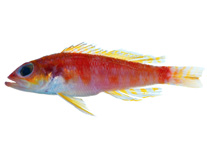Abstract
Marine sponges usually constitute the most diverse group of the benthic community in coral reefs. Although they are reasonably well studied at the northern Gulf of Mexico (GMx), the southern GMx is poorly known and lacks records from many major reef systems that lie off the Mexican coast. The present taxonomic study is the first sponge account from Alacranes reef, the largest coral reef system in the GMx, and from the shallow reef banks of Sisal, both in the northwest Yucatan Peninsula. The 19 species herein described represent the first sponge fauna records from these reefs. Among these, seven species represent new record for GMx: Erylus formosus, Cliona flavifodina, Spirastrella aff. mollis, Strongylacidon bermuda, Topsentia bahamensis, Agelas tubulata and Chelonaplysilla aff. erecta. Twelve species are new records for the Southern GMx: Erylus trisphaerus, Cliona amplicavata, Chondrilla caribensis, Halichondria lutea, Hymeniacidon caerulea, Axinella corrugata, Dragmacidon reticulatum, Chalinula molitba, Amphimedon caribica, A. complanata, Hyatella cavernosa and Dysidea variabilis. Additionally, a redescription of Erylus trisphaerus is presented which had not been reviewed since its original description in 1953 off Western Florida, except that it was listed for north La Habana, Cuba.

